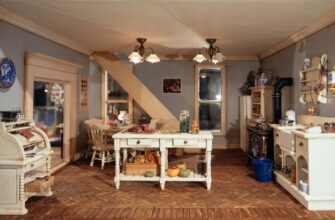The invention of the tin can was a revolution in food preservation and it was in fact a British person Peter Durand who first came up with the idea around 1800s. In 1795 French Government had offered a 12,000 cash prize for a method of stopping food from going off. This was needed for the French army as food was short. A man named, Nicolas Appert, was the one who won Napoleon’s prize when he tried a method of keeping food fresh by sterilisation.
In 1813, Durand invented a method of making tin cans with a ring made of glass. The can was made of colourless lead and it was easier to open as well as durable. The method of making the can was patented in 1818. This new kind of can was manufactured by the Henry Cate company in 1823. The tin cans of this age were bigger and had a ring made of glass.

Tin cans and tin openers appeared simultaneously around 1852. Durand used his ring opened cans to make it easier for him to sell his canned goods. He sold it for $1.25 each.
This was the beginning of the production of tins in America which was more common when the can openers were invented. Up until 1858, tins were not used to make food. That was when, nickel coated tinned food was invented. This new food had properties that made people lose weight. So, the tin can was changed to make food easier to handle.
The $1.25 (£1) spent on each tin was soon replaced by the much more valuable tin cents which could be exchanged for food. Can openers were invented to make tin cooking easier.
At this point, the use of tin cans as food containers was restricted to the wealthy. The mass consumption of tinned food was encouraged since it helped to save the environment.
The introduction of tightly closed tin cans was made possible by changes in the UK manufacturing industry. This was possible due to the availability of can manufacturers’ machines from the UK. These state of the art factories were available for rent which meant that food processing was being re-built.
Tin manufacturing was moved from the UK to Canada. This brought a problem to the USA. Products were being shipped to the USA but they had been tin discounted. It was necessary for the retailers to bring the cans back for sale but they had been sold at a discount. This was felt by the selling companies; they were paying for the crate which was still being opened.
The problem was solved when the cans were re- stocked and the price of tin was reduced. This was made possible by the capacity of the owning company as well as the ability of the retailers to buy tinplate.
The forming of a worldwide combine required the availability of the tin cans. This was possible due to the forming of a combine known as the “Big Three” or “IPE” by the International Merchandisers Agency. This meant that the forming of a global combine was possible and it was agreed that the supply of the can opening machines for theOSWER combine would be shared between the purchasers. This meant that neither the can nor the IPE could be invented or manufactured in one country.
With the formation of the OSWER it was decided that suitable tin sheets were to be manufactured in Germany. This also meant that electrical wiring was to be designed to operate the vents which would insure that the electrical energy in the can was passed into the electrical wiring. This also meant that it was possible to make electrical wiring in Germany to operate the can openers by using the opener’s plug point located on the top of the can. This had the additional advantage of having the inserting of the plug point at the top of the can so that electrical wiring could be connected to it.
With the invention of the OSWER and with the forming of the IPE the revolving can had a clear disadvantages in that it could no longer be handled as a lunch box. It had to be carried in the suitcase which was quite heavy. With the invention of the packet or “rolley” the minute required to complete the task was reduced. The mass production of the can had to start as well. This meant that the wont use of the can was increased.
Can openers continued to be “invented” on a smaller scale. They were produced for particular applications. The can opener has to be able to open a tin lid, but it also has to be able to do the same task as a knife. The blades of today are softer and a lot more flexible.
The tin opener has to be able to cut through the lid of a tin can quickly and easily, but it also has to be able to do this without bending the can.








